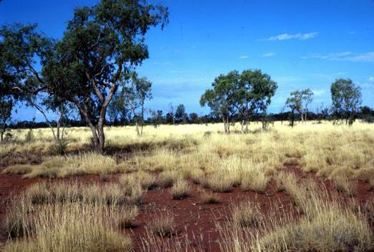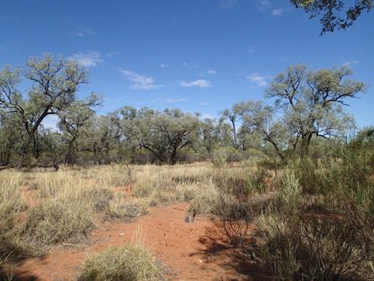Hummock grasslands


Habitat type: Hummock grasslands
Other key words: Spinnifex, sand plains, open hummock grassland, Dunes open forbland.
Description: Hummock grasslands occur on infertile sand plains and dune fields, rocky hills and mountain range slopes, as well as normally-dry watercourses and salt lake systems. This vegetation type of western Queensland is dominated by spinifex or porculpine grasses (Triodia species) but not to be confused with Spinifex species of coastal areas. These species are hummock-forming evergreen perennials, which appear as mounds up to 1m in height. Hard spinifex (Triodia basedowii), Triodia pungens, giant grey spinifex (T. longiceps) or buck spinifex (T. mitchellii) dominate hummock grasslands. In some areas, the grasslands are sparsely wooded with species of Acacia, Senna, Grevillea, Eucalyptus, and/or Corymbia. Many other grasses and forbs also occur. The vegetation provides shelter for a large variety of reptiles and small marsupials.
Some animals that use this habitat type: Striated grasswren, rufous-crowned emu-wren, wongai ningaui, fat-tailed dunnart, Sandy inland mouse, sand monitor, Eyrean earless dragon, desert skink.


